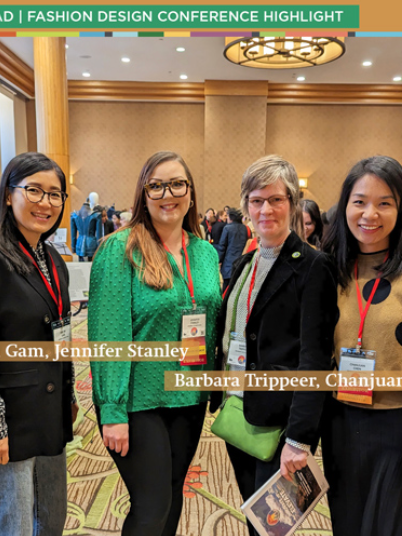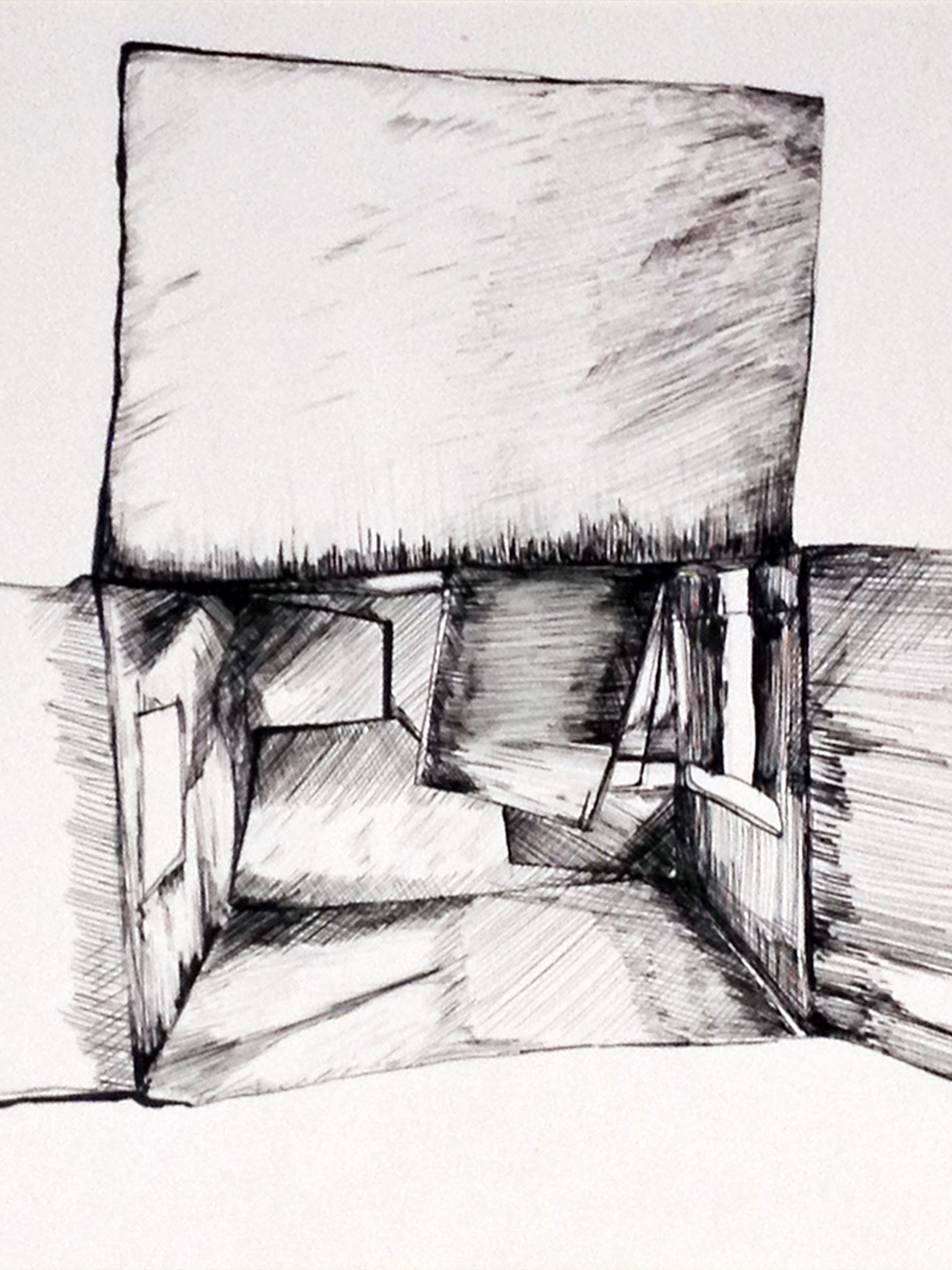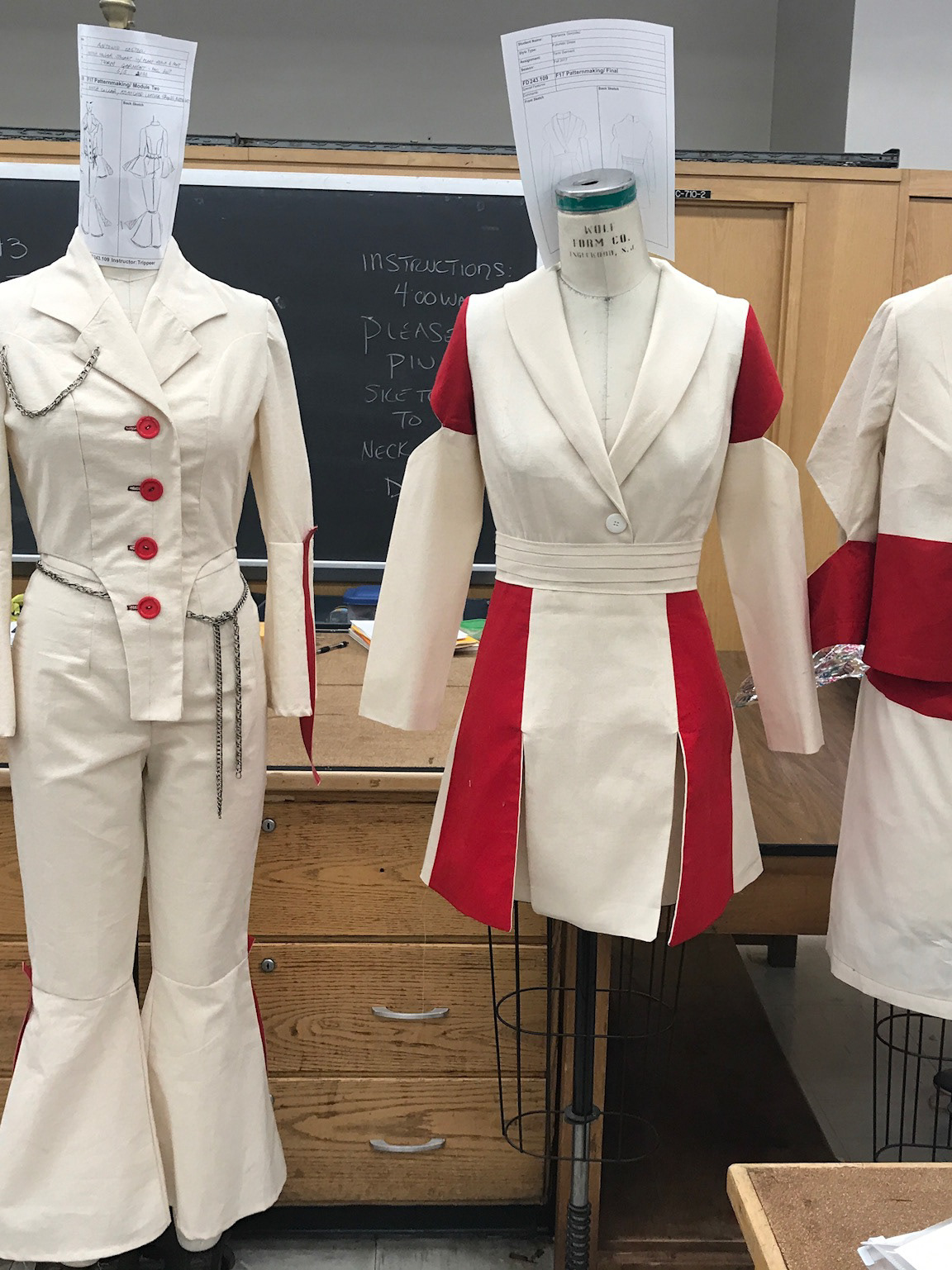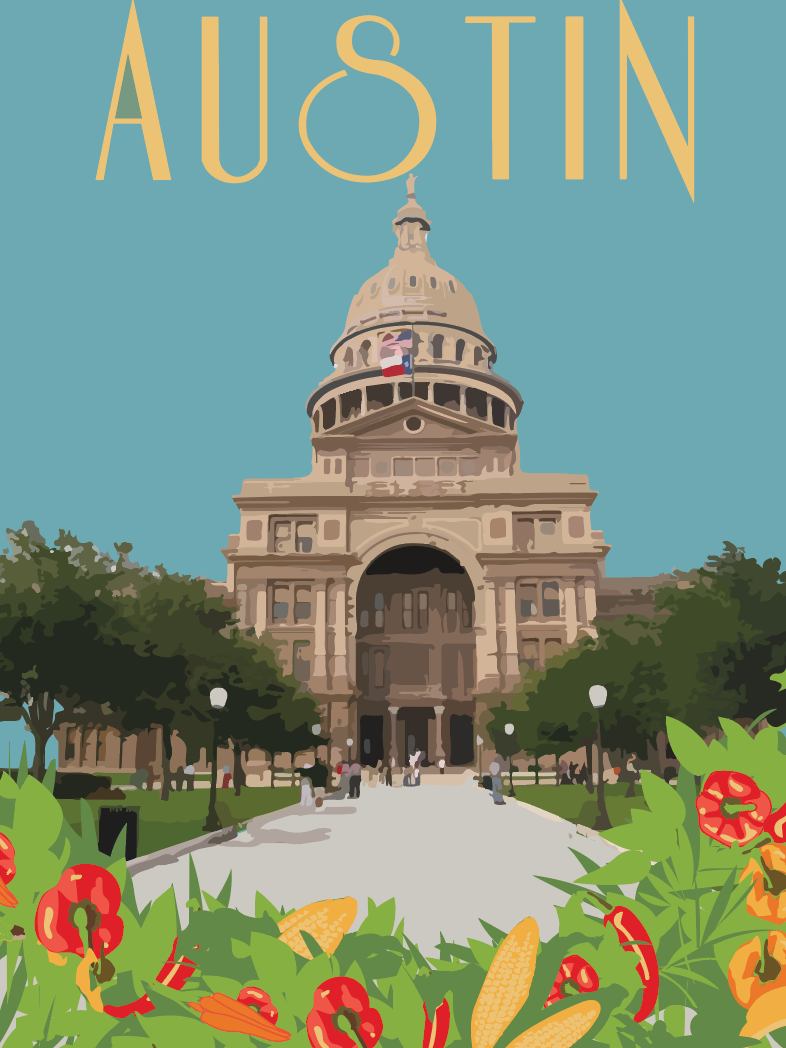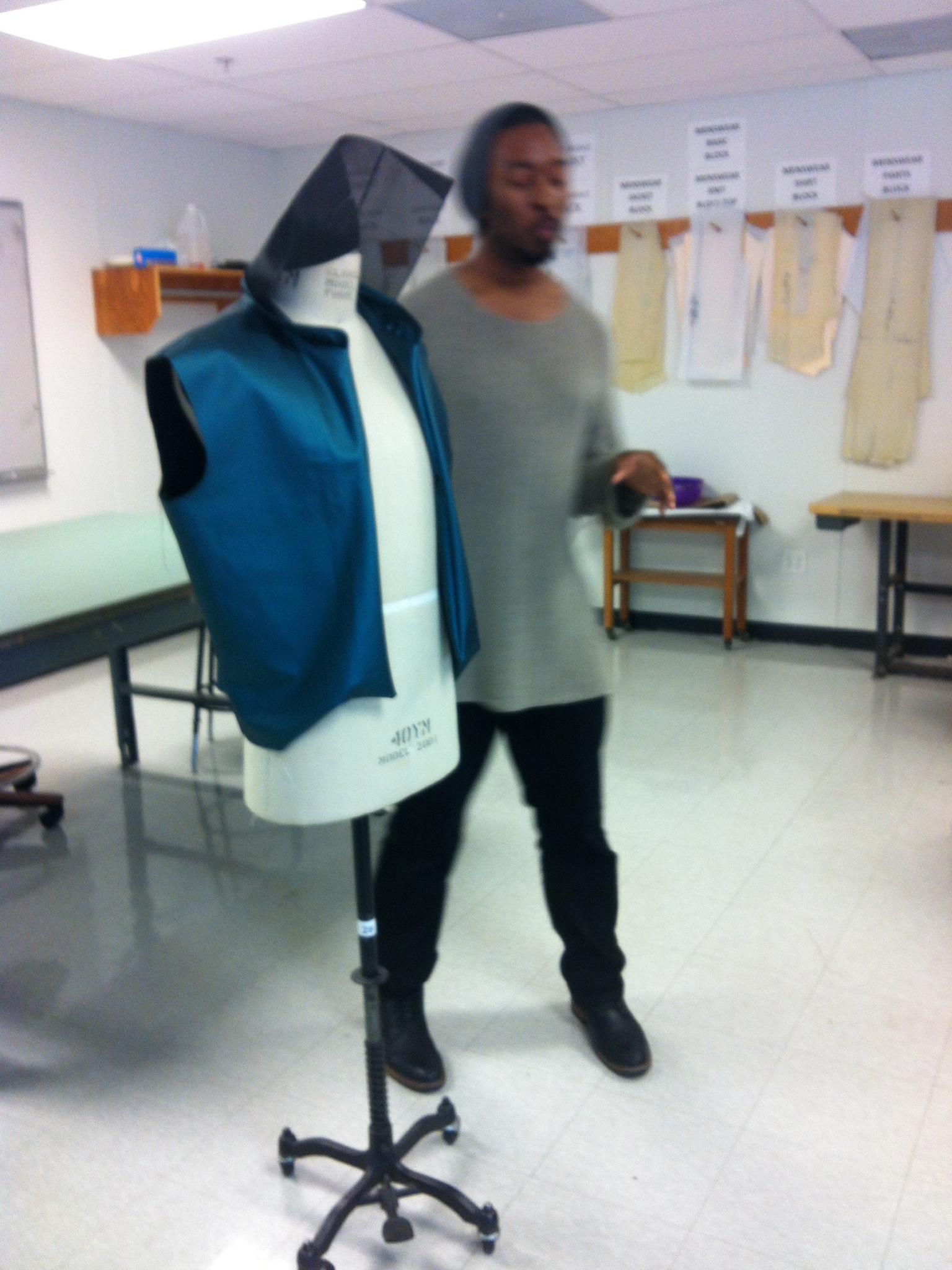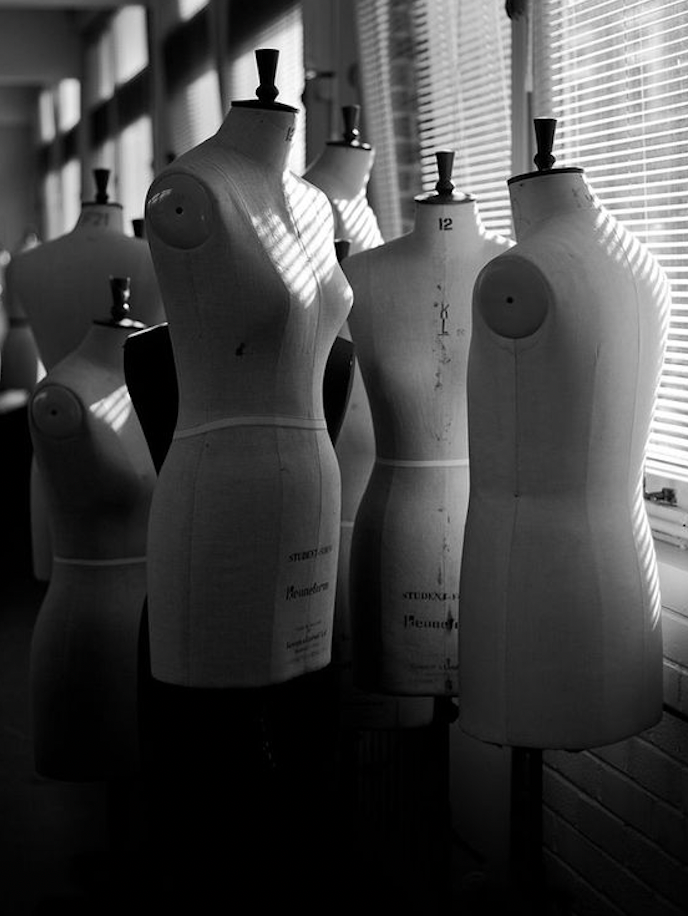The three purposes that drive me as a faculty member and a designer are that of ensuring that my efforts build a legacy of positive impact, significantly benefit my profession by guiding others to be successful, and produce valuable contributions to both my industry and my institution.
2020 Teaching Highlights
With regards to teaching, it has been my purpose to prepare future generations of designers to actively engage with ethical design and social justice issues as well as the challenge of sustainability, as they interact with an evolving industry utilizing emerging technologies.
One of the methods of this approach which I apply in the classroom is introducing alternative forms of development in consideration of the impact that their design decisions will have on the world.
In Fall 2019, I lead my ADES 4590: Fashion Design Studio: alternative processes design class on a client-based project, re-designing the character costumes in collaboration with UNT’s Music Program, for a rendition of Mozart’s Don Giovanni.
Students reflected on their experiences as part of an e-portfolio, stating:
• “This class pushed me to problem solve as a designer and gave me opportunities to gain experience.”
• “The most valuable part of this process…was the opportunity to get hands-on experience of creating garments for specific people was a great skill to learn. The second most useful aspect of this project was the ability to see how the design process works when it includes a chain of command in various locations. Lastly, it was interesting to see how technology could be utilized in different areas of apparel and accessories”.
I used this project to create an impact by presenting this as part of my scholarship of teaching as an Experiential Client based learning, which I then presented at the 2020 ITAA conference, earning 1st place in Innovative Teaching.
Pivoting for the PANDEMIC
Innovation: Converted in-person curriculum into robust hybrid digitally-enhanced studio experience accommodating necessary social distancing protocols.
The onset of the pandemic meant that faculty such as myself who train students for industries which rely heavily and hand skills, had to come up with adaptive and innovative ways to format our content to ensure student engagement and success regardless of mode of delivery.
Many long hours were spent not only developing a first-person perspective online archive of every planned demonstration, but additional research and training was spent to ensure inclusive design formats were adopted as part of the new delivery mode, both in the online and in-person formats.I executed step-by-step first-person video tutorials of each demo lesson for the FA 2020 semester (30 demos @ 2x per week) for the full 15 week semester), in addition to a series of additional visual aids to ensure incoming students with learning differences, visual and hearing impairments, and language barriers would have a variety of support materials in the classroom to ensure student success.
Ultimately, during the Fall of 2020, I was teaching in two formats simultaneously- in order to ensure the range of skills were covered over a reduced semester (based on application of A/B studio formats) I applied a multi-modal approach to content delivery, which meant that students were learning new content twice a week, regardless of being in-person or online, as we live-streamed daily, and held daily “check-in” roundtables, in addition to being able to access the video archive and other support materials.
This also meant that workflow of course material had to be carefully scaffolded and clearly communicated with all students, regardless of their status, to ensure successful engagement with the material.
To do this, I applied principles of universal design and inclusive instruction, based on additional training from UNT’s ODA, ODE office, CLEAR, and through outside sources, to ensure strategies were employed for both online and in-person forms of delivery.
Each week, I started the first-class period off with a recap of the previous week’s material before giving an overview of the new concepts, by including a series of weekly open discussions on what’s working and what’s not, which created an opportunity to ensure that all students had access the resources and training materials.
Likewise, these touch base sessions were additional opportunities for me to engage with the students not only to consider the weekly lessons in terms of our overall learning agenda, but also help prioritize key learning objectives and allocation of time and resources mastering new material as they worked toward completion of their milestone projects.
Demonstrating Impact: Students responded very positively to these adaptations, earning me a 4.8 on the SPOT survey, despite civid-related challenges.
Students reported:
• “Trippeer is amazing at presenting and teaching us new skills and strategies.”
• “Professor Trippeer helped me greatly and she taught me so many different pattern making skills this semester. Not only that but she also taught me how to better my sewing skills and has excellent teaching style.”
• “The professor contributed the most to my learning. She was very active with all of the students, making sure we all knew exactly what to do, and made sure she talked to each of us individually.”
Although the pandemic necessitated innovations which required a huge time investment and a complete overhaul of our content and delivery, the end result from student scores and spot feedback indicates that the modifications which were implemented were well received, and may yet position our students to be even more prepared than any previous generation to be successful in the workplace.

